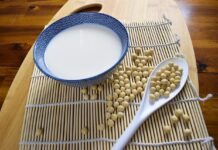Summer fruits and vegetables are required because they are truly wonderful for our health. Without fruit and vegetables in our daily diet, our body would run severe risks of diseases of all kinds.
Summer fruits and vegetables in India, thanks to their precious content of water, essential vitamins, fibers, and mineral salts, are indispensable foods to ensure the well-being, vitality, and energy necessary.
Vegetables and fruits contain fructose. It is a simple carbohydrate that has the same chemical formula as glucose. It, therefore, produces the sensation of sweetness naturally and thanks to the presence of fibers, is assimilated more slowly by the body. Through this slowing down, blood sugar balance is favored and also long-term energy supply, thus helping to maintain a healthy weight.
Know about Antioxidants
Fruits and veggies also contain antioxidants. Antioxidants are phytochemicals that counteract the adverse action of free radicals, effectively fighting cellular aging.
Different colors of fruit and vegetables indicate the presence of various antioxidants. Alternate between colors every day, so as to change the type of antioxidants you take:
-
- Red for Penelope and Anthocyanins
- White for Quercetin
- Green for Chlorophyll and Carotenoids
- Blue – Violet for Anthocyanins and
- Yellow – Orange for Beta-Carotene
The action of these substances has a preventive effect against tumors and also helps your body, keeping your skin younger and more elastic.
Summer fruits and vegetable list:
Summer Fruits
-
- Watermelon / Muskmelon
- Pineapple
- Guava
- Strawberries
- Litchi
- Kiwi
- Plums
- Mango
Summer Vegetables
-
- Cucumber
- Bottle Gourd
- Bitter Gourd
- Carrots
- Green Beans
- Ridged Gourd (Turai)
- Okra (Lady Finger)
- Pumpkin
Watermelon
The watermelon plant belongs to the Cucurbitaceae family, the same as cucumbers, squash, and melon. Watermelon ripens from June to September which is typical among summer fruits in India.
-
- Watermelon is a fruit rich in water, which represents approximately 95%, and has high satiating power. It’s caloric content is very low. 100 grams of watermelon has only 30 calories. These features make it a portion of valuable diet food.
-
- Watermelon is a fruit that is refreshing, perfect for summer, and contains various kinds of vitamins and minerals, so it is good to recover the substances lost through sweating and in case of exhaustion during the sultry summer. It also presents different types of antioxidants such as Penelope, to which it owes its red color.
-
- Watermelon is a source of minerals, in particular, potassium, phosphorus and magnesium, and vitamins, especially Vitamin C. This fruit is rich in antioxidants such as beta-carotene, the precursor of Vitamin A, and Penelope, typical of tomato and of red vegetables. Watermelon is also rich in particular amino acid, citrulline.
A nice slice of watermelon will refresh you and make you recover from exhaustion making it the best among healthy summer foods. Being a highly diuretic fruit, watermelon helps detoxify the kidneys and bladder by counteracting the growth of bacteria, thus helping to prevent cystitis.
Mango
Summer fruits and the vegetable list is incomplete without mango. Mango is an exotic fruit with a tender and tasty pulp, which has strong anti-inflammatory and anticancer properties.
Like most fruits it is rich in water, poor in fats and proteins but very rich in some minerals like potassium (100 grams of mango has about 6.5% of the daily requirement), magnesium (6.2% of the daily requirement), copper (more than 10% of the daily requirement) and manganese.
It does not disappoint in its vitamin content – vitamin C (28 mg for a daily requirement of about 80-100 mg), vitamin B6, vitamin E, and folates are present (about 10% of the daily requirement).
Mango fruit has been shown to improve blood glucose and insulin levels and to improve insulin sensitivity and glucose tolerance. This can prevent diabetes.
Mango has anticancer properties, thanks to the presence of lupeol. This triterpene has pharmacological power and can inhibit cell mutagenesis and to stimulate the death of tumor cells.
Cucumbers
Rich in vitamins and minerals (among which potassium and magnesium stand out), cucumber offers numerous beneficial properties and is particularly suitable for all those people who must maintain a controlled diet.
Thanks to the potassium content, regular consumption of cucumbers can favor the elimination of excess liquids, with a consequent beneficial effect on blood pressure. Due to the purifying and draining action, cucumbers hinder the formation of bladder and kidney stones.
Regular consumption of summer fruits such as cucumber helps lower uric acid levels, facilitating the healing of gout, a painful disease that causes inflammation of the joints.
The tartaric acid contained in cucumbers can help weight loss, as it prevents the conversion of carbohydrates into adipose tissue.
Okra (Lady Finger)
Most common among summer vegetables, the okra is low in calories and is very rich in water. 100 g of okra contains just over 30 calories. It contains a good amount of vitamin A, B vitamins, vitamin C, vitamin E, and vitamin K.
Rich in minerals it contains calcium, sodium, selenium, iron, zinc, manganese, copper, potassium and magnesium.
Okra is useful for the fight against high cholesterol and high blood sugar, thanks to the gelatinous substance inside that contain a helpful mucilage to control the absorption of cholesterol and blood sugar. On top of that, it promotes respiratory health. The decoction of okra seeds is considered a natural remedy against respiratory infections.
Pumpkin
The excellent nutritional values associated with the numerous beneficial properties for the body and its health, make the pumpkin a unique vegetable.
-
- Despite the sweet taste, the pumpkin is a part of low-calorie diets thanks to its very low glucose and lipid content, offset by high percentages of fiber, vitamins and mineral salts. 100 grams of pumpkin, in fact, provides only about 26 calories, and this is possible due to the high water content.
-
- Pumpkin is a source of fibers, minerals (including calcium, phosphorus, potassium, zinc, selenium, and magnesium) and vitamins , in particular beta-carotene, a precursor of Vitamin A, known for its excellent antioxidant properties, of Vitamin B (B1 , B2, B3, B5 and B6) and Vitamin C.
Beta-carotene is an important antioxidant that helps to counteract the onset of free radicals and, therefore, cellular aging. Furthermore, the pumpkin is rich in good fats such as Omega-3, an ideal ally for the reduction of cholesterol and blood triglycerides and for lowering blood pressure, thus reducing the risk of arterial plaque formation which, obstruct the arteries and cause heart attacks.


















